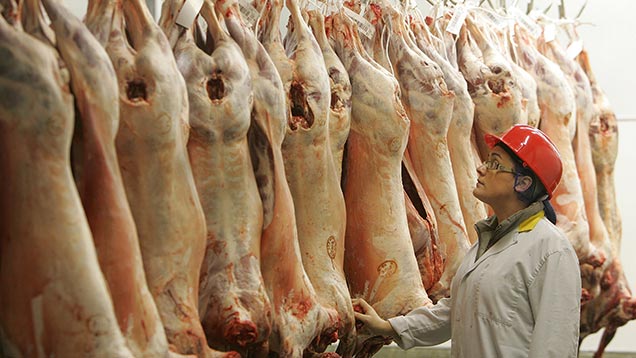Abattoirs must stop sheep inconsistency, report says
 © Rex Shutterstock
© Rex Shutterstock Farmers are frustrated with inconsistency when selling sheep direct to processors, according to a new report.
The NFU’s deadweight transparency study shows established practices are hurting transparency and could be costing producers money.
The report found:
- Many abattoirs do not use the industry standard dressing specifications, causing big variations between “company specs” and making comparisons meaningless
- Rounding down of weights to the nearest half kilo is still normal practice, despite more precise scales being available
- Many processors, especially smaller ones, still pay based on weight rather than carcass classification
- The hot-cold rebate, which works out the animal’s weight when chilled, unfairly penalises heavy and light carcasses
- Only four large plants are involved in deadweight price reporting and the variations in specification could damage the robustness of the sample.
The NFU is calling for rounding down to be abolished, the number of price reporting plants to be increased, dressing specs to be standardised and the hot-cold sliding scale to be switched to a flat 2% rate.
See also: Beef farmers face abattoir confusion
NFU livestock board chairman Charles Sercombe said these were broad issues that farmers and the wider industry kept raising.
“They will not necessarily put any more money into farmers’ pockets, but will make everything more clear and transparent,” he said.
Just over two-fifths of the 14 million sheep killed each year are sold direct to abattoirs.
The deadweight survey, carried out in the autumn, involved gathering kill sheets from 16 farmers finishing 830 lambs a year on average.
Some of the inconsistencies found could carry a significant cost to producers.
The report quoted two “company” dressing specifications which had a 0.4kg difference between them.
For the average farmer in the sample, this could lead to roughly a 332kg difference a year – equivalent to 17 lambs.
